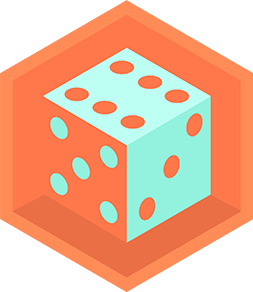Create Your First Scratch Program
Make your first interactive Scratch program by creating a moving character, adding sound and simple code blocks to respond to clicks and keyboard keys.



Step-by-step guide to create your first Scratch program
Step 1
Open the Scratch website and sign in or create a free account so you can save and share your project.
Step 2
Click the "Create" button to start a brand-new Scratch project.
Step 3
Choose a sprite from the Sprite Library or draw your own sprite with the paint tool to be your moving character.
Step 4
In the Code area click the Events category and drag the "when green flag clicked" block to the scripts area.
Step 5
From Control drag a "forever" block and snap it directly under the "when green flag clicked" block.
Step 6
Inside the forever block add an if block that checks "key right arrow pressed?" and attach a Motion block "change x by 10" to make the sprite move right when the right arrow is pressed.
Step 7
Inside the forever block add another if block that checks "key left arrow pressed?" and attach a Motion block "change x by -10" to make the sprite move left when the left arrow is pressed.
Step 8
Click the Sounds tab and choose a sound from the library or record a short sound for your sprite.
Step 9
In Code click Events and drag "when this sprite clicked" to the scripts area and then attach a Sound block "play sound [your sound] until done" under it.
Step 10
Click the green flag to run your program and test the arrow keys and clicking the sprite to hear the sound and see the movement.
Step 11
Click the project title to give your project a fun name and then click "Share" so others can view it on Scratch.
Step 12
Share your finished Scratch project on DIY.org so everyone can see what you made.
Final steps
You're almost there! Complete all the steps, bring your creation to life, post it, and conquer the challenge!


Help!?
What can we use if we can't access the Scratch website or can't make a Scratch account?
Download and use Scratch Desktop to build the same project offline and export the .sb3 file to share by email or Google Drive instead of signing in on the website or sharing on DIY.org.
My sprite doesn't move when I press the arrow keys — what should I check?
Make sure you clicked the green flag, that the 'when green flag clicked' block has the 'forever' block with each 'if key [right/left] arrow pressed?' block correctly snapped containing the 'change x by 10' or 'change x by -10' Motion blocks, and click the stage so the project has keyboard focus rather than a text field.
How can I adapt the activity for different ages?
For younger kids, replace the forever/if structure with simple 'when right arrow key pressed' and 'when left arrow key pressed' hat blocks and bigger 'change x by' values or larger sprites, while older kids can add costume switching for walking, a 'score' variable (Data), boundaries like 'if on edge, bounce', and new backdrops to make levels.
How can we extend or personalize the finished program?
Add a goal sprite and inside the forever block use 'if touching [goal]?' to increase a 'score' variable, switch costumes when moving to animate the sprite, and record or choose custom sounds in the Sounds tab to play on click or movement before sharing on Scratch or DIY.org.
Watch videos on how to create your first Scratch program
Get Started with Scratch Guide: 5 Tips & Tricks for Beginners 🎉
Facts about coding for kids
⌨️ Scratch uses event blocks so sprites can respond to clicks, key presses, and messages—no typing required.
🧩 Scratch programs are built from colorful snap-together blocks, making coding feel like solving a puzzle.
🏫 Scratch was created by the MIT Media Lab's Lifelong Kindergarten group and first released in 2007.
🐱 Scratch's friendly mascot is the Scratch Cat, which appears in thousands of beginner projects.
🎵 You can record or upload sounds, change pitch, and add music so your characters can sing or make effects.
How do I make my child's first interactive Scratch program?
What materials do I need to create a first Scratch project?
What ages is making a first Scratch program suitable for?
What are the benefits of creating a first Scratch program?


One subscription, many ways to play and learn.
Only $6.99 after trial. No credit card required



